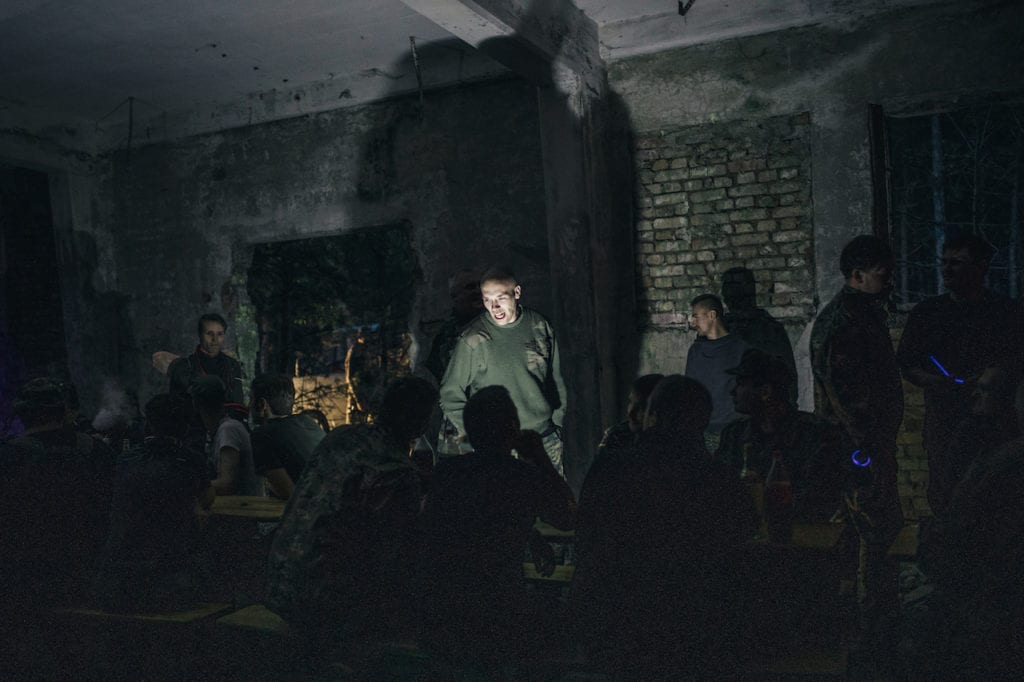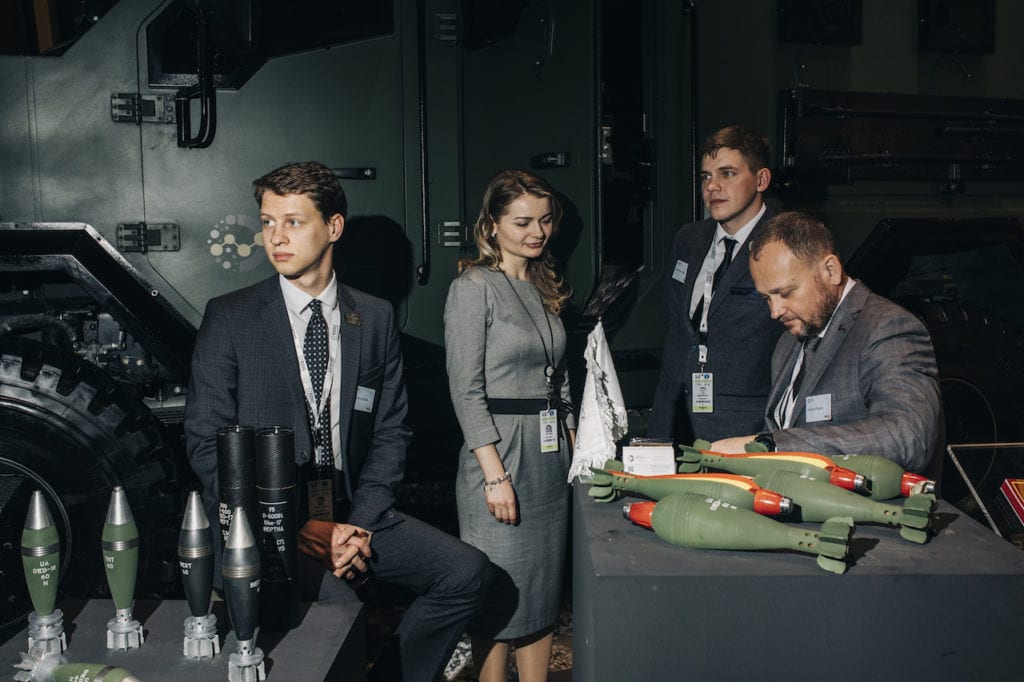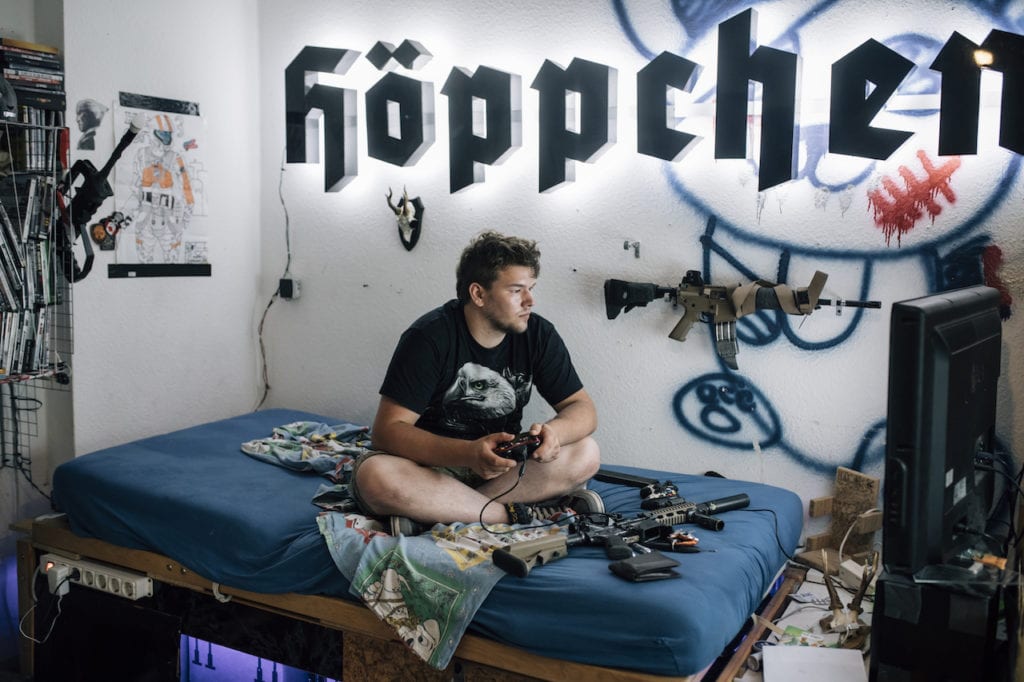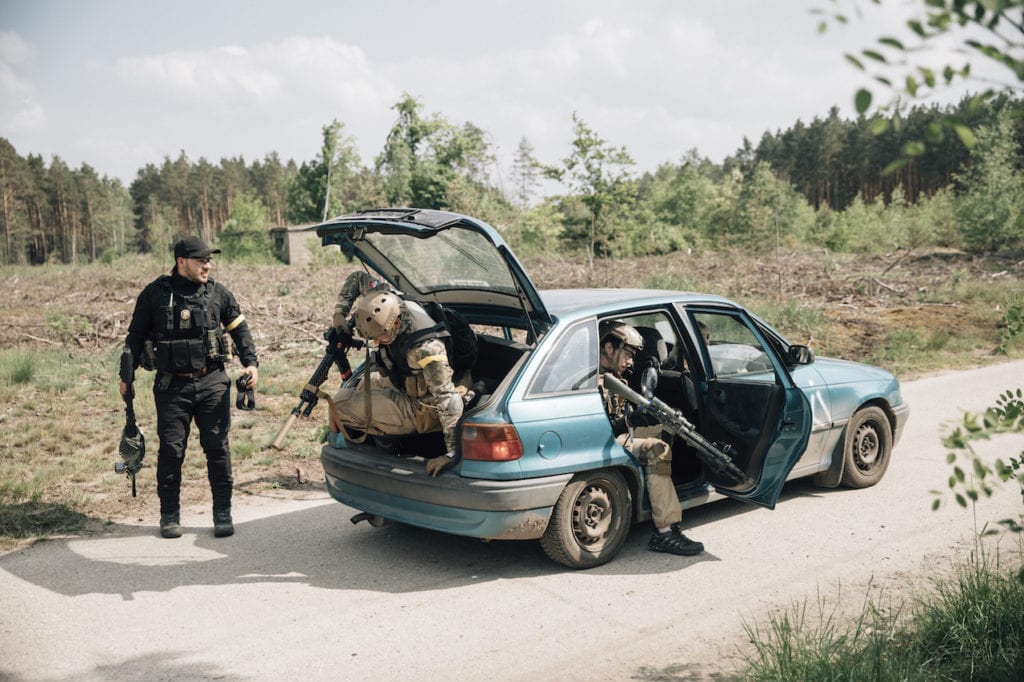When does war begin? This is the question that has guided Rafael Heygster’s ongoing investigation into war beyond the battlefield. Among the many stories he has documented are reportages on the sport of Airsoft — a competitive role-playing game in which participants fight with replica weapons — and investigations into those who prefer to indulge virtual reproductions of war in the form of violent computer games. Heygster has travelled within his own country, Germany, but also to Poland, Czech Republic, and the United Arab Emirates, to explore the more political and monetary aspects of war, at weapons trade fairs, and other places where conflict has become a consumable product.
“The thing that connects all these different scenarios is that they stage war as something entertaining and harmless,” says Heygster. But, his images — depicting gusts of smoke and fire plummeting out of tanks during demonstrations at a weapons convention, and the spark of aggression in an airsoft player as he commands the room – feel far from innocent. Employing a cinematic aesthetic, Heygster’s photography toes the line between what is real and imaginary, questioning the implications of the culture of war outside of battle.


The ongoing project I Died 22 Times, was awarded the 2019 Gomma Grant. The title refers to the number of times that Heygster was hit during an airsoft game that he photographed. According to the photographer, most of the people who play airsoft have not experienced real war. “Their imagination of what war is like comes from movies and video games,” he says. “They think war is something entertaining, an adventure.”
Glamorising warfare has obvious consequences — the reality of war is brutal and barbaric — but for some of the people that Heygster met, there was also a feeling that these activities provide a form of escapism. “It can be unhealthy,” the photographer reflects, “but people who have aggressions can fit into a role for one day in the forest, and after the game they go back to their everyday life in a very peaceful way.”However, the photographer also encountered airsoft players who had motivations he could not comprehend, such as a man whose grandparents had been victims of the Holocaust, and ex-military men who had experienced war, killed people, and played the game to keep up their “muscle memory”.


The debate on whether these forms of “imaginary” violence can lead to real-world violence is one that is prevalent in regards to video gaming. For Heygster, these manifestations of war say more about our society and culture than they do about the people who indulge in them for entertainment. “They are a mirror of society,” he says.
—
